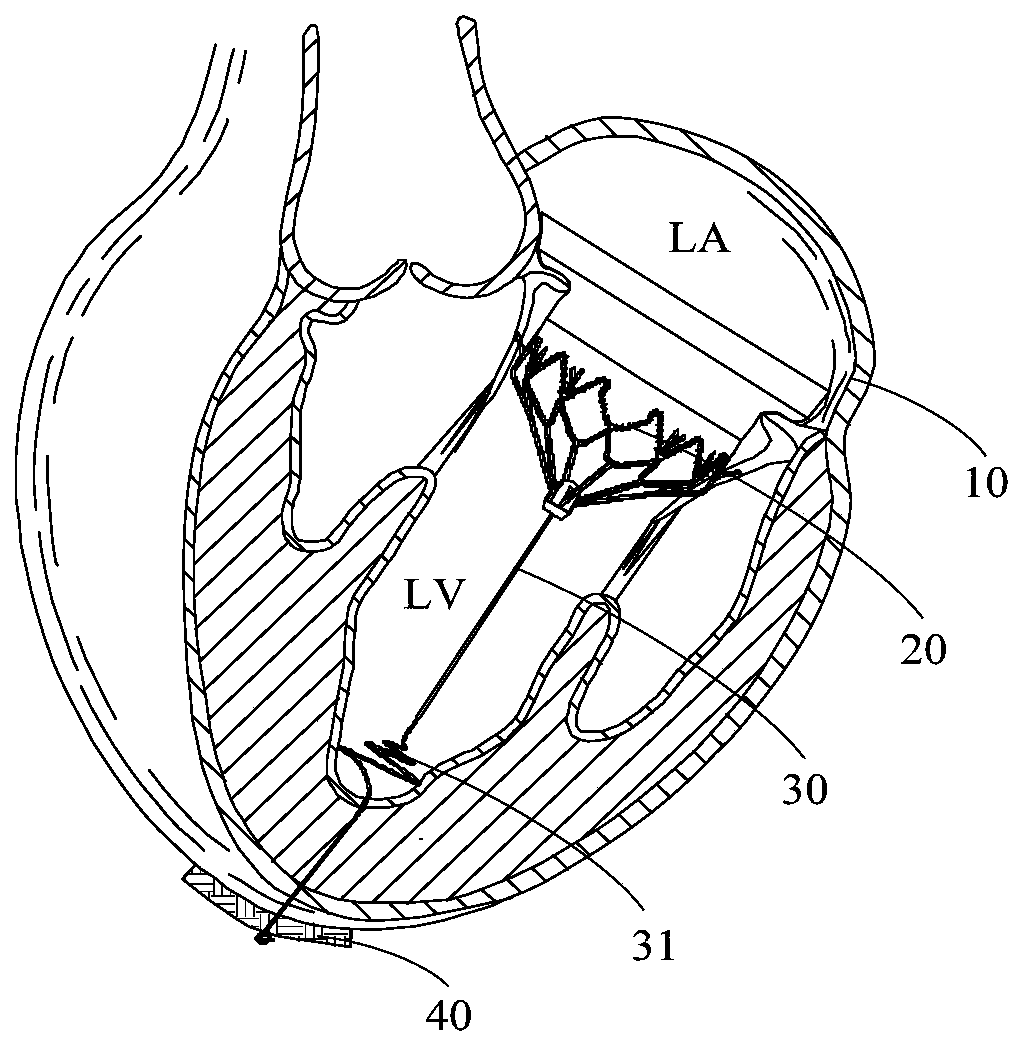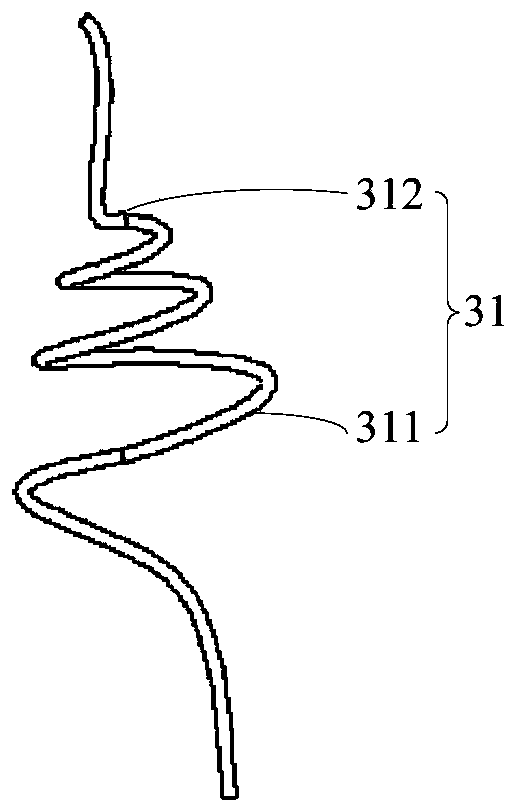Cardiac valve tying rope and cardiac valve component comprising the same
A technology of heart valves and tethers, applied in the field of medical devices, can solve problems that affect heart recovery and are no longer applicable, and achieve the effects of reducing time, complexity, and dependence
- Summary
- Abstract
- Description
- Claims
- Application Information
AI Technical Summary
Problems solved by technology
Method used
Image
Examples
Embodiment 1
[0029] like figure 1 As shown, one end of the heart valve tether 30 is connected to the heart valve 20 implanted in the heart 10, and the other end of the heart valve tether 30 is fixed to the apical spacer 40 outside the heart 10. At least part of the heart valve tether has Elasticity, so that the length of the heart valve tether 30 can be adjusted according to the force value of the heart valve tether 30 . In the illustrated embodiment, the heart valve tether 30 is provided with a helical segment 31 extending along the axial direction of the heart valve tether 30, the helical segment 31 itself has a shape memory function, figure 2 It shows a schematic diagram of the local structure of the heart valve tether 30 in a normal state, image 3 It shows a schematic diagram of the local structure of the heart valve tether 30 in a stretched state. When the two ends of the heart valve tether 30 have tension, the length of the helical segment 31 becomes longer, as figure 2 As shown...
Embodiment 2
[0039] like Figure 8 As shown, the heart valve tether 30 is provided with two ends interlaced to form a bending circle 32, and the heart valve tether 30 can be provided with a bending circle 32 or a plurality of bending circles 32, and the bending surface formed by the bending circle 32 Parallel to or coincident with the axis of the heart valve tether 30, that is, the winding direction of the bending circle 32 is towards the apex of the heart valve 20 and the ventricle LV respectively, and the plane where the bending circle 32 is located is perpendicular to the apical spacer 40 at the apex position, Such a heart valve tether 30 enables the bending ring to withstand the tension on both ends of the heart valve tether 30 , and the bending ring evenly bears the contraction force of the heart 10 so that the overall deformation of the heart valve tether 30 is reduced.
[0040] Figure 9 It is a schematic diagram of the local structure of the heart valve tether 30 in a normal state...
Embodiment 3
[0044] The heart valve tether 30 is made of metal stainless steel, nickel-titanium or metal material with good biocompatibility, or is made of non-metal material with high modulus of elasticity, or is made of absorbable material.
[0045] like Figure 11 As shown, the heart valve tether 30 itself is a spring-like structure or a section of spring-like structure is set on the heart valve tether 30. The wire diameter of the spring-like structure ranges from 0.1 mm to 1 mm, and the outer diameter of the spring-like structure ranges from 0.3 mm-5mm, when the heart 10 contracts, the heart valve 20 moves distally relative to the fixed end of the heart apex, so that every part on the heart valve tether 30 is in a stretched state; when the heart 10 relaxes, the spring Constrained by the structural properties of the shape, the heart valve tether 30 returns to its implanted state.
[0046] The difference between this embodiment and the first embodiment is that there is a larger distance...
PUM
| Property | Measurement | Unit |
|---|---|---|
| Outer diameter | aaaaa | aaaaa |
Abstract
Description
Claims
Application Information
 Login to View More
Login to View More - R&D
- Intellectual Property
- Life Sciences
- Materials
- Tech Scout
- Unparalleled Data Quality
- Higher Quality Content
- 60% Fewer Hallucinations
Browse by: Latest US Patents, China's latest patents, Technical Efficacy Thesaurus, Application Domain, Technology Topic, Popular Technical Reports.
© 2025 PatSnap. All rights reserved.Legal|Privacy policy|Modern Slavery Act Transparency Statement|Sitemap|About US| Contact US: help@patsnap.com



